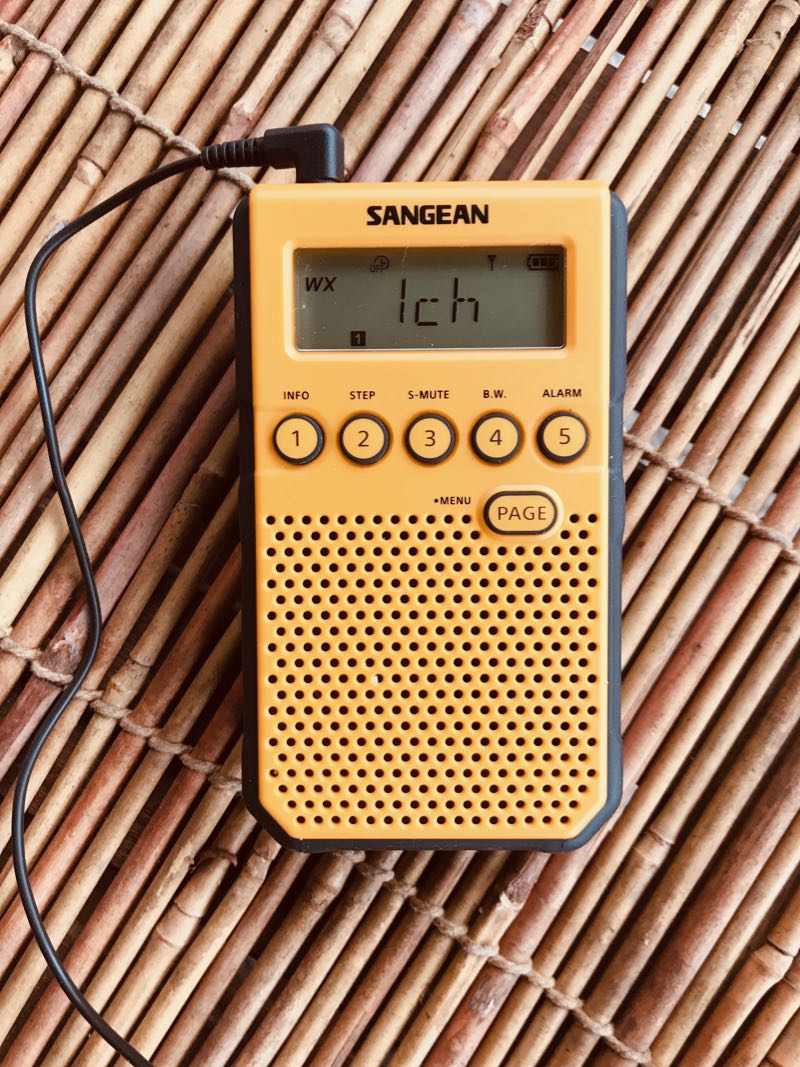 Many thanks to SWLing Post contributor Dennis Dura for sharing an article from Radio World that highlights recent NOAA Weather Radio outages and the broader implications for emergency alerting systems. A timely reminder of the vital role EAS backups play in public safety infrastructure.
Many thanks to SWLing Post contributor Dennis Dura for sharing an article from Radio World that highlights recent NOAA Weather Radio outages and the broader implications for emergency alerting systems. A timely reminder of the vital role EAS backups play in public safety infrastructure.
Read the full article here: NOAA Weather Radio Disruptions Highlight Need for EAS Backups

Agreed it is not AM, however it is not the usual broadcast FM which requires a 200 kHz wide channel. It is Narrow band FM with a channel width of 25 kHz. Mono FM broadcast will accept audio up to 15 kHz where as in narrow band it is designed for voice only and usually this is limited to around 3 kHz. A narrow FM channel means requires small deviation thus weak sound so the signal to noise ratio in Narrow band FM is not a lot better than AM. It does however still have the characteristic of supressing the weaker signal in the receiver.
Mangosman, if a consumer ‘NOAA’ receiver simply used the SAME Intermediate Frequency / demodulation section as regular 88-108 FM, yes the audio will be “weak” (low) and letting in more noise than needs be. However a receiver with a dedicated NBFM (narrow-band FM) section for NOAA will perform much better receiving such transmissions. I suspect fidelity is a bit more than just 3kHz (speech fidelity extended up to 5 or 6kHz in fact greatly helps intelligibility in noisy conditions at the receiver location).
NBFM reception of course requires high frequency accuracy at the receiver, but this would not be a problem with modern digital tuned receivers.
The NWS in Sterling, Virginia compiles the forecasts and transmissions for several transmitters in this region, including my local one which is in Pikesville, Maryland. That one is down sometimes when I try to tune it.
At least in this coastal area, much of the broadcast content focus on marine weather, and is not of much use to the general public. The USCG also has marine weather on VHF. Isn’t that where sailors listen?
Finally, the voice synthesis is primitive and stilted sometimes mispronouncing local names. Alexa is better.
I’m using a CCrane Skywave SSB 2. Is there a radio with weather alert that doesn’t suck up juice when it is on standby and then comes on automatically when an alert is received?
The concept is good. The execution could use a little work.
Aviation has it’s own weather service in the 118 MHz band called AWOS. That service is in AM, but the NOAA is not. NOAA is targeted to the general public.
sorry – this post is in response to mangosman’s comment
NOAA is based on 1000 VHF 162 MHz AM transmitters which only transmit weather and emergency messages.
This has two problems;
The frequency and AM has a ‘line of sight’ coverage means that monitoring of transmitters will be limited to transmitter alarms.
Amplitude Modulation is used because the weather information is aimed at the aviation industry who don’t use FM. This is because only the strongest FM transmission on that channel is all that is heard. A weaker signal is not audible. In AM both signals can be heard which is important in aircraft in the air.
https://gge.ext.unb.ca/test/SWL/2018-0568a%20DRM%20REPORT%20final%20PDF%20UDI%201732.pdf
Is an Alaskan Coast Guard evaluation of broadcast of iceberg warnings including clear color maps.
High Frequency (Short Wave) can cover huge areas. Digital broadcasts of data and not voice means that in cases of intermittent reception, The receiver will only process error free data meaning it will still show error free reception even if it takes a little while to down load.
The best option is to add the warnings etc to an on air digital radio broadcasters. The broadcasters loose money if their signal is not up to scratch. So broadcasters make sure this is the case.
This is has been the case over the whole Indian sub-continent and other countries are building digital broadcasting radio networks driven by the ability to broadcast live announcements .
Modern radios use Software Designed Radio technology which makes it inexpensive to add additional frequency ranges, which is why it is use in phones.
NOAA weather radio in the 162 MHz range is actually broadcasting in FM. Not AM.
All NOAA 162mhz “public” transmitters are FM – not AM.